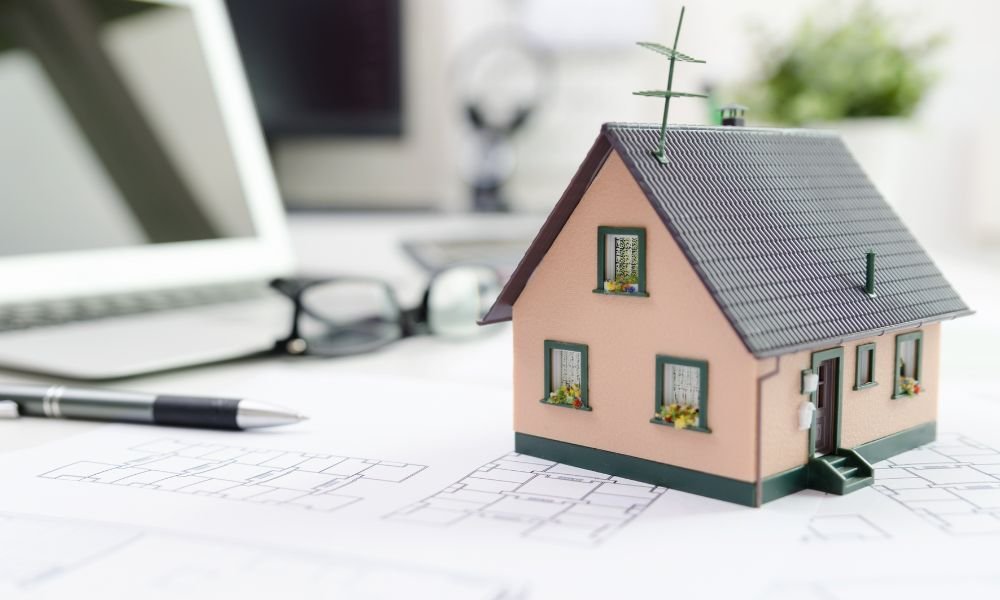Calculating the cost of house construction is an essential step in the building process. It helps you budget for the project and make informed decisions about materials, design, and other factors. In this article, we’ll provide a detailed overview of how to calculate the cost of house construction, including key factors to consider and tips for getting the most accurate estimate possible.
Calculating Cost of House Construction
To accurately determine the overall expenses associated with a project, homeowners must consider both direct and indirect costs. Direct costs refer to those materials and services that are paid directly to subcontractors, while indirect costs include permitting fees, taxes, inspection fees and more.
They must factor in materials such as lumber, bricks and roofing tiles into their budget. Additionally, labor is a major expense when it comes to constructing a home. Labor rates will vary depending on the region and type of work being completed.
They should also keep an eye out for additional costs such as delivery charges or contractor mark-ups for supplies purchased from outside vendors.They must account for any unexpected expenses that may arise during the course of their projects.
Materials & Labor Costs
These costs can vary greatly depending on the scale and complexity of the project in question. Generally speaking, materials tend to make up between 40-60% of total construction costs. This includes everything from lumber, drywall, roofing materials, electrical wiring, plumbing fixtures, paint and other finishes. Taking into account local labor rates as well as any specialized expertise needed for the job will also be necessary when calculating construction costs.
In addition to hourly wages for skilled workers like electricians and plumbers, there may also be additional labour fees associated with hiring contractors or architects who oversee large-scale projects. Lastly, it is important to factor in overhead expenses such as insurance coverage for both workers and property that must be taken into consideration when budgeting a house construction project.
Design Considerations
Building a house is not just a matter of adding up the price of materials and labor; it involves careful thought and planning. The layout and design of the home must be taken into account when calculating cost, as well as the size and complexity of the project.
For example, if a homeowner chooses to use high-end materials for their house construction project, then this will increase the cost significantly. In addition to materials selection, other factors such as energy efficiency and structural integrity should be considered in order to ensure that your home meets all safety requirements while keeping costs manageable. Furthermore, features such as decks or patios could also drive up costs depending on their size and complexity.
Site Preparation & Utilities
The preparation of the site for the building process requires labor, materials, equipment, and time to properly grade it for foundation work. This could include demolition of existing structures or tree removal in order to create a safe and level building space. Additionally, contractors may need to take into account any necessary soil treatments or compaction works before laying down a foundation.
Utilities also factor into the overall cost as they need to be installed on-site by qualified professionals such as electricians and plumbers in order to provide adequate plumbing, electrical wiring, heating/cooling systems, etc., for the home’s occupants. This could involve trenching and burying pipes or running cables underground along with other necessary materials that must be factored in when calculating costs associated with new construction projects.
Foundation & Framing
The foundation is the base of a structure and is responsible for ensuring that it remains stable over time. It must be designed to withstand any natural disasters, including floods, earthquakes, or other extreme weather conditions. Framing provides the structure with its shape and stability by connecting walls, floors, and ceilings to each other.
The cost of foundation and framing depends on many factors such as the size of the house, type of materials used for construction, labor costs, local building codes and regulations, etc. It is important to consult with an experienced contractor before beginning work in order to determine an accurate estimate for these expenses. A professional contractor can also provide advice on how to build a stronger structure that will last longer without needing repairs or renovations as time passes.
Finishes & Fixtures
They are the materials used to complete the interior and exterior of a home. They can include cabinetry, countertops, flooring, tile work, paint, lighting fixtures, hardware, windows and doors. While finishes and fixtures may not cost as much as other elements of house construction such as labor or materials like lumber or drywall, they are still an important factor in determining the overall cost of building a home.
The cost of finishes and fixtures will vary depending on the type chosen. For example, high-end cabinetry can be significantly more expensive than laminate cabinets. Additionally, certain types of flooring such as hardwood or tile may also have higher costs associated with them compared to carpet or vinyl floors.
Bottom Line
In conclusion, calculating the cost of house construction requires a thorough understanding of the various factors that can impact the price of the project. By considering the size of the house, the materials used, the cost of labor, and other costs like permits and design fees, you can get a more accurate estimate of the overall cost of your construction project. Using a construction cost calculator and working with a reputable contractor can also help ensure that you stay within budget and get the most value for your money.
